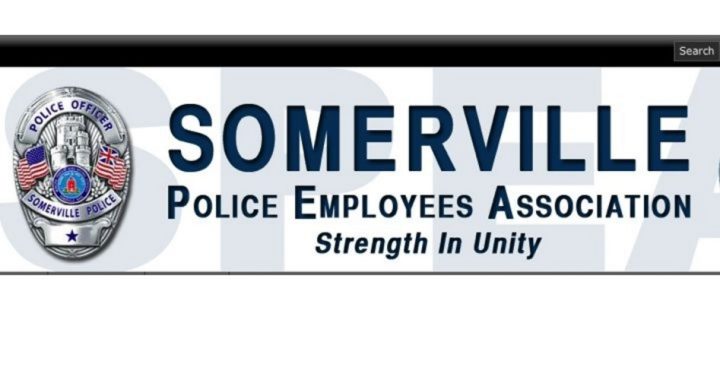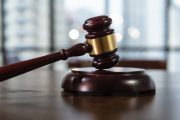
“Are these the ‘peaceful protesters’ that you’re hitching your wagon to?”
This is the question that Michael McGrath, president of the Somerville, Massachusetts, Police Employees Association, asked in a letter to the mayor of the city, Joseph Curtatone. McGrath was expressing the displeasure of most of the uniformed police officers in the city, in reaction to the continued display of a “Black Lives Matter” banner over the entrance to City Hall, which has hung there for almost a year in the Boston suburb of nearly 80,000.
McGrath wrote the letter to the mayor after the assassination of five Dallas police officers by a man who expressed his support for the New Black Panther Party and Black Lives Matter (BLM). McGrath also referenced a BLM protest in St. Paul, Minnesota, in which 21 officers were injured. One officer suffered a spinal fracture when a concrete block was dropped on his head.
“The mayor has clearly chosen a side, and it’s not to support law enforcement,” McGrath told ABC News. “The Association is opposed to the misuse of excessive force, including deadly force, as are well-intentioned members of BLM.”
But the police officers were “deeply troubled,” and McGrath said it was “demoralizing” that the city of Somerville had continued to display a sign in support of the BLM movement, while “standing silent over the seemingly daily protest assassinations of innocent police officers around the country.”
“Hanging the [Black Lives Matter] banner speaks to all lives,” retorted Mayor Curtatone. He refused to replace the banner with one that reads, “All Lives Matter,” as requested by the police union. Curtatone said he supported his police officers, but he wanted to take a stand against “systemic racism in our nation.”
Eighteen BLM protesters were arrested last year after blocking a major Boston area highway. In an effort to placate the group, Curtatone met with BLM leaders and eventually put up the banner at City Hall. None of the protesters served any jail time.
Mayor Curtatone, a liberal Democrat, was once praised by First Lady Michelle Obama for his efforts to reduce childhood obesity in the city schools.
Somerville Police Chief David Fallon publicly supported the mayor’s decision to keep the BLM banner up at city hall. This move is no surprise, considering that Curtatone appointed Fallon to his present position in 2014. Appointed police chiefs do not enhance their job security by publicly challenging their bosses.
Chief Fallon chastised the police union, arguing that its members should not involve themselves in the national debate over BLM and police shootings. He claimed that the decision to display the banner was up to the city government, not the police. He added that the city’s black community, six percent of Somerville’s overall population, live “in fear.” “Whether I feel that that is justified or not, it doesn’t matter,” he insisted, adding, “When I hear the hashtag or see the banner ‘Black Lives Matter,’ it just brings to my mind personally that we have to be inclusive.”
Somerville is not the only municipal government in Massachusetts to display a BLM banner. Northampton Mayor David Narkewicz gave permission to the Western Massachusetts chapter of Showing Up for Racial Justice to display a Black Lives Matter sign on a city building on Main Street in honor of Martin Luther King, Jr. Day.
When confronted with residents upset with the display, Narkewicz said he did not regret his action. And he added that Police Chief Jody Kasper supported his decision. Once again, Kasper was appointed by Narkewicz, and it would be newsworthy only if she opposed her boss’s decision — at least in public.
A retired Northampton police officer, Andrew Trushaw, recalled a rally in November 2014, which followed the decision of the Missouri grand jury to not indict Ferguson police officer Darren Wilson in the shooting death of Michael Brown. “At this rally, in Northampton, I listened to chants that included people shouting, ‘What do we want … Dead cops! When do we want them … NOW!” Trushaw said the chants were “disturbing and divisive,” adding, “This [the BLM banner] IS promoting violence, not solving a problem.”
Mayor Narkewicz, however, claimed it was unfair to blame Black Lives Matter for incidents of violence. “If you’re going to paint an entire social movement as anti-police or lawless because of the words and deeds of a few members of the movement, it’s really no better than painting all police as racists because of the actions of a few.”
However, as reported last week by The New American, the Black Lives Matter movement is, at least for some, not just an effort to defend the lives of innocent African-Americans from the actions of a minority of police. Ashleigh Schackelford, writing in Wear Your Voice, makes it clear that the movement is radical. “We live in a white supremacist capitalist world,” she insists. Clearly, many in BLM see their efforts as part of a social revolution, as evidenced by signs at BLM rallies promoting communism, either in words or with signs of the communist hammer and sickle.
Shackleford demands redistribution of wealth: “Nothing you have is yours,” she declares. “Let me be clear: Nothing you have is yours.” To Shackleford this means reparations. “You [white people] are living off of stolen resources, stolen land, exploited labor, appropriated culture and murder of our people. Nothing you have is yours.”
Unsurprisingly, President Barack Obama has welcomed representatives of Black Lives Matter into the White House.



